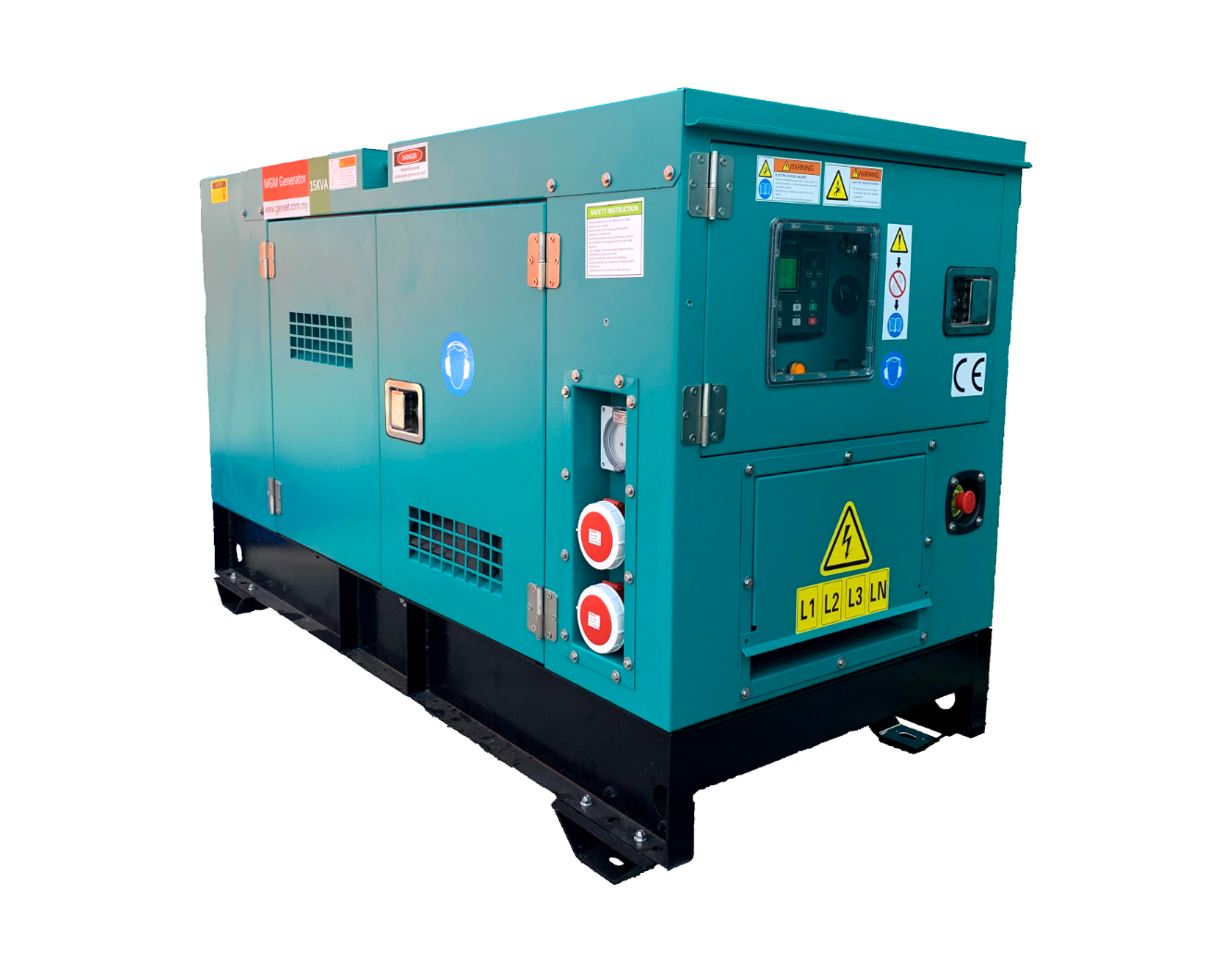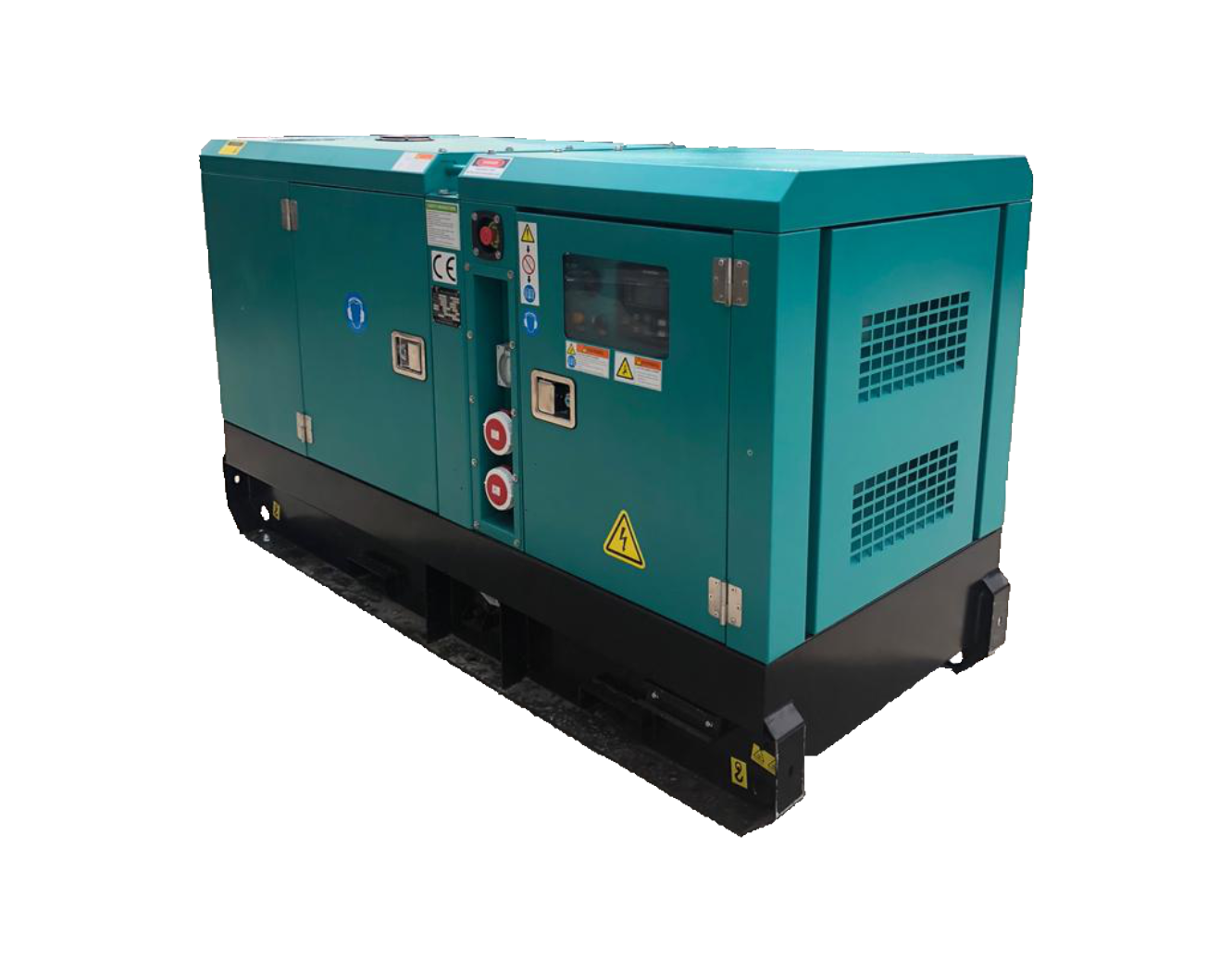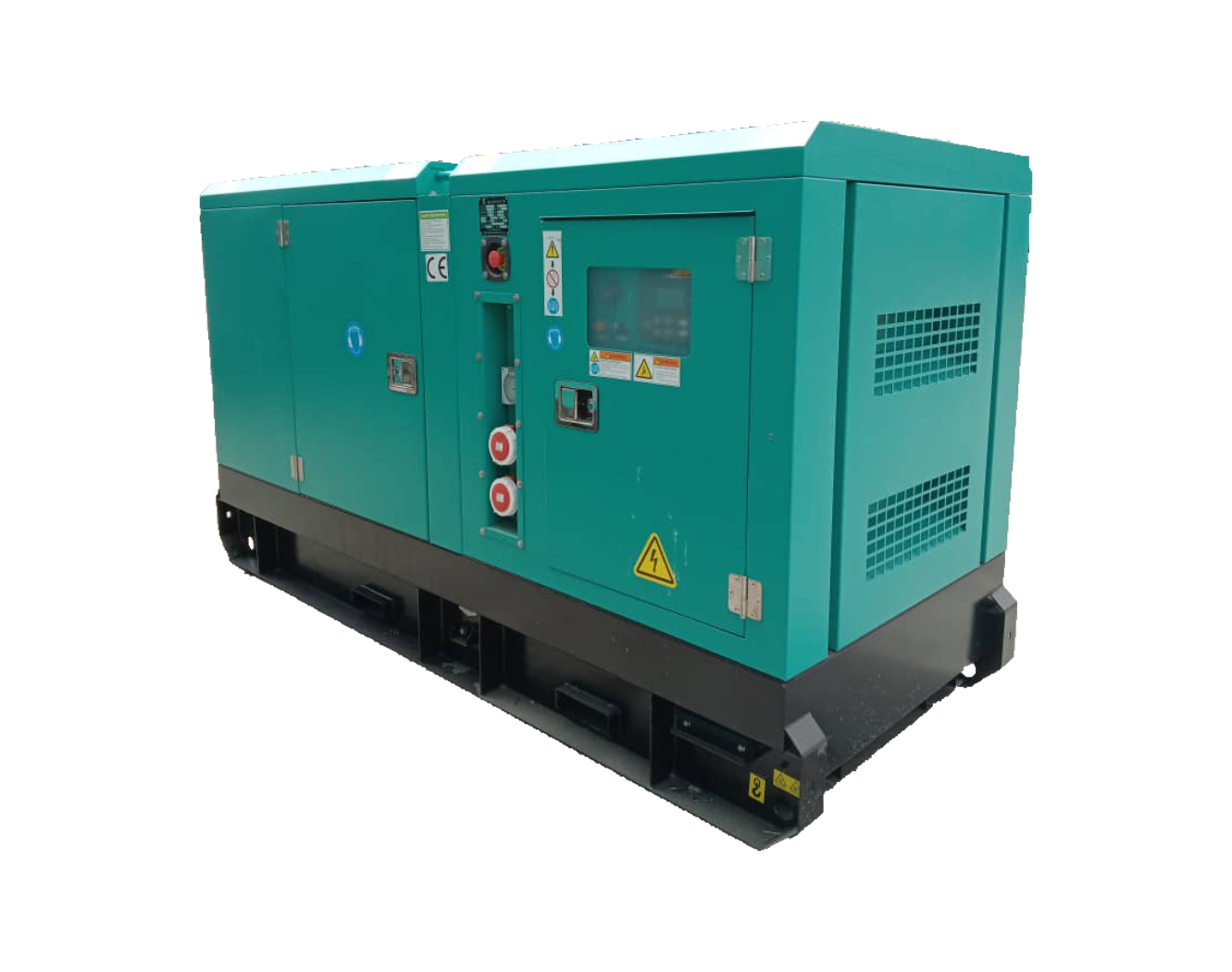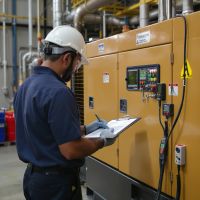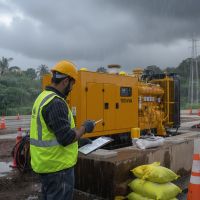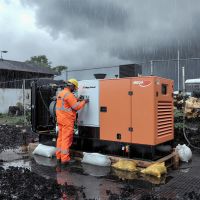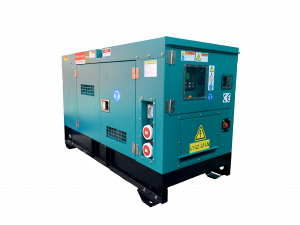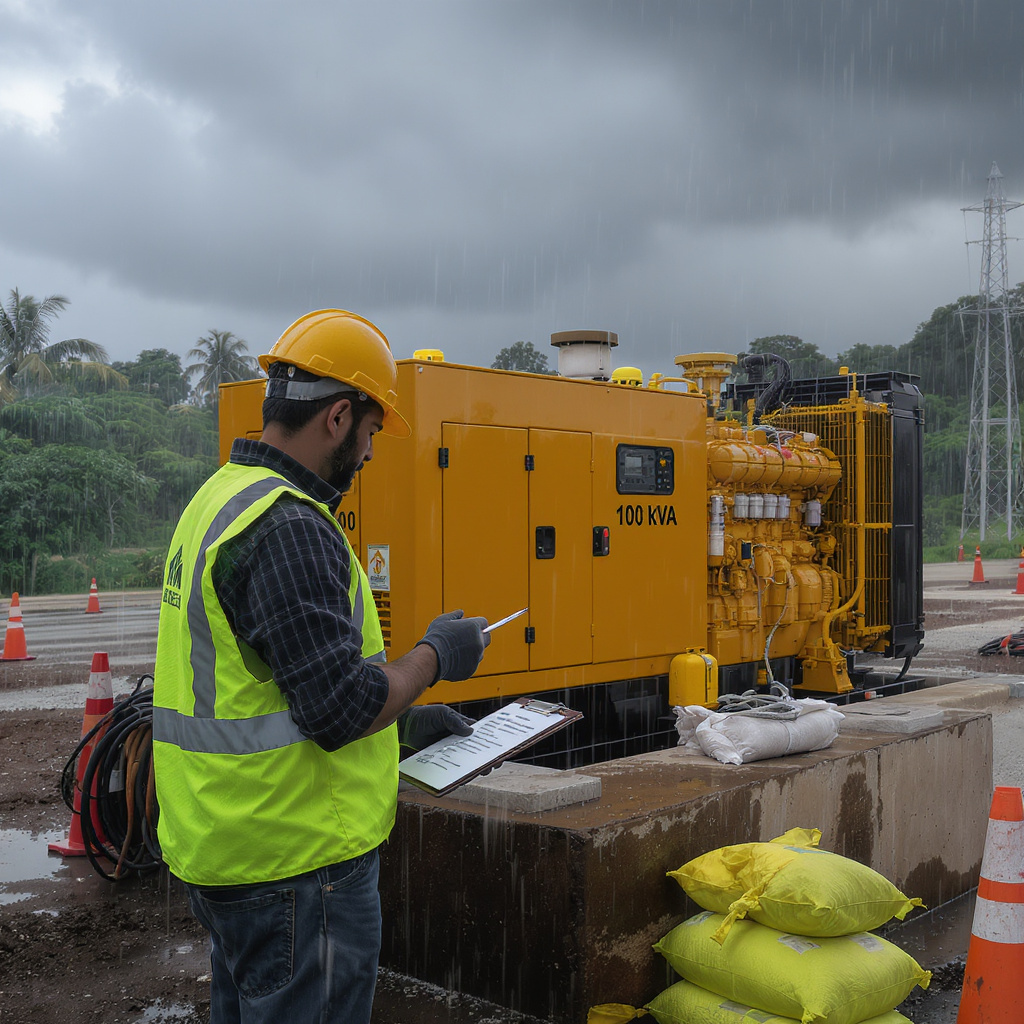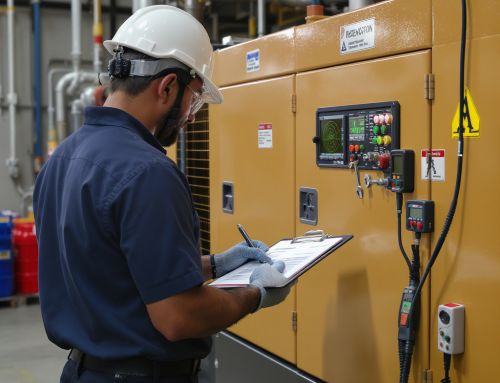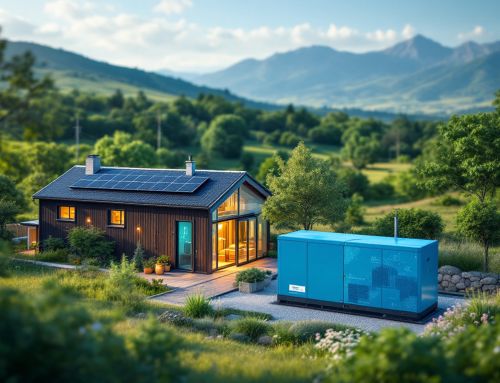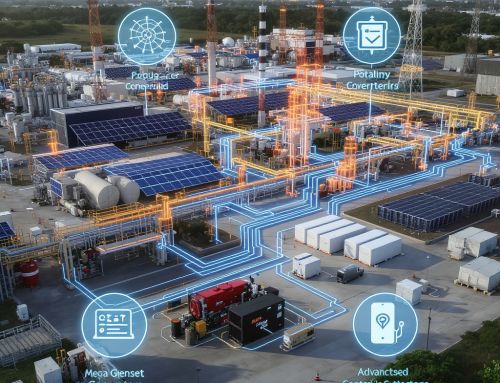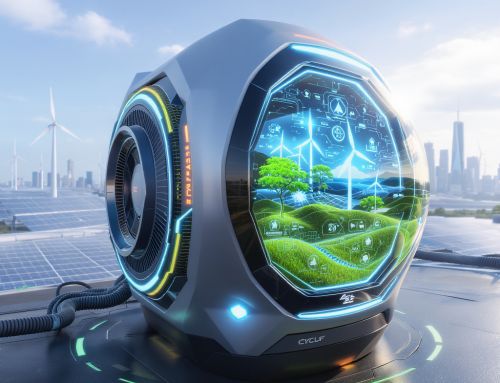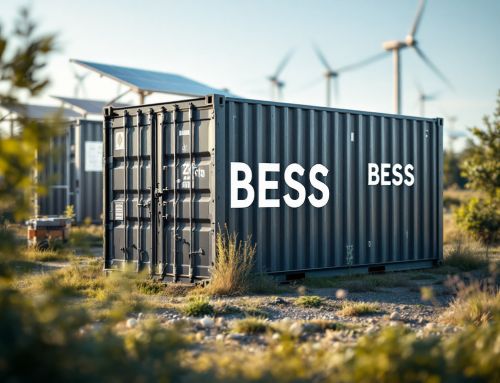How to Prepare Your Genset Before Monsoon & Storm Seasons in Malaysia
Heavy rain, high winds, and lightning are part of Malaysia’s monsoon reality. For facilities that rely on continuous power—factories, data rooms, clinics, hotels, construction sites, and residential high-rises—preparing your generator (genset) before the season starts is the difference between smooth continuity and costly downtime. This guide from Mega Genset covers practical, field-tested steps to harden your power system against storms while optimizing safety, reliability, and compliance.
1) Safety first
- Lockout/Tagout: Isolate energy sources before any service.
- PPE: Wear helmet, gloves, eye protection, and insulated footwear.
- Ventilation: Ensure exhaust routing is clear; never run a genset in enclosed, unventilated spaces.
2) Site and enclosure hardening
- Elevation and drainage: Raise the genset plinth above flood level and keep perimeter drains clear. Pre-stage sandbags if your site is low-lying.
- Weatherproofing: Inspect louvers, door seals, and canopy gaskets. Replace cracked rubber and re-seal cable gland entries.
- Corrosion control: Clean, dry, and recoat rust spots. Apply dielectric grease on exposed terminals.
- Lightning and surge protection: Verify functional SPD modules and bonding; check earth resistance.
3) Electrical checks and ATS readiness
Automatic transfer happens most during storms—make sure it works the first time, every time.
- ATS inspection: Tighten lugs to spec, inspect contactors, verify phase rotation, test permissives and interlocks.
- Load path: Inspect breakers, cable terminations, and earthing points; confirm labels are weatherproof and legible.
- Test run: Simulate a utility outage to confirm start, transfer, stable voltage/frequency (50 Hz), and return-to-mains logic.
4) Fluids, filters, and belts
- Engine oil: Sample or replace if overdue; use OEM-grade oil. Check for dilution or water contamination.
- Coolant: Confirm mixture and inhibitor levels; pressure-test the cap; inspect hoses for bulges or leaks.
- Fuel filtration: Replace primary/secondary fuel filters; drain water separators.
- Air intake: Clean/replace air filters; clear obstructions around intake louvers.
- Belts: Check tension and signs of glazing or cracking; replace as needed.
5) Fuel quality and storage
- Polish and test: Water and microbial growth spike in humid monsoon conditions—polish bulk tanks and test for water, particulates, and cetane.
- Additives: Use biocides and stabilizers per OEM guidance.
- Housekeeping: Inspect vents, caps, and spill containment; label valves clearly for emergency use.
6) Battery and start reliability
- Battery health: Load-test batteries; clean terminals; confirm charger settings and DC ripple.
- Crank circuit: Inspect starter motor, cables, and relays; verify cold-start aids if your site experiences cool highland mornings.
7) Capacity, load testing, and runtime planning
- Priority loads: Classify essential vs. non-essential circuits; program load shedding where feasible.
- Load test: Perform a full-load or resistive load-bank test to validate voltage regulation, frequency stability, and cooling capacity.
- Runtime plan: Size fuel stocks for realistic outage durations and resupply constraints during floods and road closures.
8) Remote monitoring and alerts
Deploy controllers with telemetry for SMS/email alerts on start failures, low fuel, high temp, and fault codes. Smart monitoring cuts response time and prevents small issues from becoming outages.
9) Spares and storm kit
- Critical spares: Filters (air, oil, fuel), belts, coolant, fuses, contactor kits, spare battery, engine oil, and hose clamps.
- Tools & supplies: Headlamp, desiccant packs, absorbent pads, spill kit, multimeter, infrared thermometer, and insulated tools.
10) Post-storm inspection checklist
- Visual survey: Look for water ingress, debris around the radiator and intake, and damaged weather seals.
- Electrical: Insulation test if water exposure is suspected; verify earth integrity and SPD status indicators.
- Run and re-verify: Conduct a controlled start and 30–60 minute run; confirm no abnormal vibration, temperature, or alarms.
Choosing the right genset for the rainy season
If you expect frequent outages or long runtimes, size your standby properly and choose a canopy/enclosure rated for severe weather. Many Malaysian SMEs standardize on dependable mid-range models for resilience and cost-efficiency. Explore our 60 kVA MGM Generator for small factories, clinics, and hospitality, or step up to a 100 kVA MGM Generator for larger retail, towers, and light industrial sites.
Why prepare early?
Proactive maintenance always costs less than emergency repairs. A single outage can disrupt production schedules, damage sensitive equipment, and impact safety systems like lifts, alarms, and pumps. Early monsoon prep gives you a validated, documented state of readiness that protects people, assets, and revenue.
Need help? Book a pre-monsoon genset health check
Our field engineers can perform a site audit, load test, and storm-hardening checklist tailored to your facility. Get started here: Contact Mega Genset or reach us directly at genset@genset.com.my and +60129689816. We’ll help you achieve grid independence and storm-ready reliability with smart controls, robust enclosures, and properly sized MGM generators.

